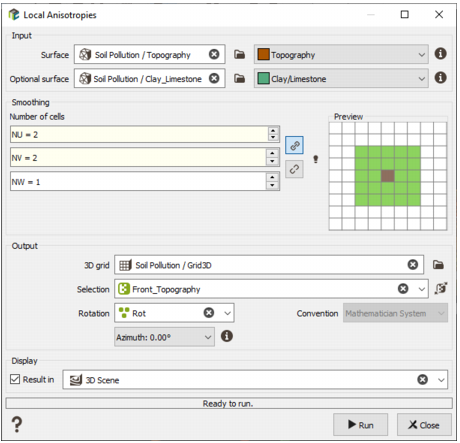Local Anisotropies
Objectives
In geostatistical applications, one can perform estimations (kriging for example) using a variogram model. This variogram model may have anisotropies which are generally defined globally. In some circumstances, it may be of interest to define varying anisotropy directions.
The goal of the Local Anisotropies module is to generate these local anisotropies by making the hypothesis that they are guided by the geology. Two cases are considered:
- The anisotropies are parallel to a reference surface.
- The anisotropies are guided by a two surfaces (usually a top and a bottom surfaces). At the top of the domain the anisotropies are parallel to the top surface. At the bottom of the domain, the anisotropies are parallel to the bottom surface.
The results are stored in a dedicated Rotation compound variable which can be used later in the Kriging module or in the Simulations module.



